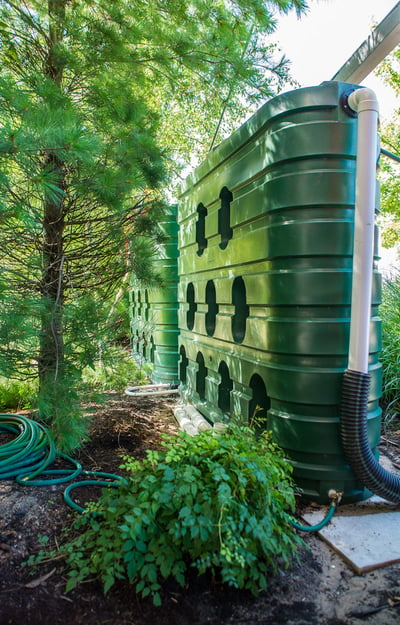
The main issue with the prevailing conception of urban ecology is that it takes people out of the equation. Problem is, we can’t do that.
When you think of “urban ecology,” what do you see?
For most folks, it’s a winding river. A pristine prairie. A tall and silent forest, with old growth trees standing sentinel. Perhaps a regal stag or two.
The problem with this picture? Almost no one sees people as a part of it.
And believe us, that’s a problem.
Why? At more than 7.5 billion strong, humans are the most populous mammals on Earth (followed by cows, sheep, pigs and dogs, if you were curious). Our urban areas cover 3 percent of the world’s landmass, and that’s not even including rural settlements. Our livestock and agricultural production are among the leading causes of global climate change.
Any definition of or approach to ecology that fails to include humans is doomed to fail. We can’t operate on the assumption that we’re somehow “outside” the environment. Our worldwide hegemony, simply put, means we cannot be. Likely ever again, unless our species perishes at our own hand. Or, like asteroid strike maybe.
Too depressing for the morning? Okay, okay. Sorry.
Point being, we’re here. And we need to take account of … us.
Who Is Included in “Urban Ecology”?
 Humans have a huge impact on how the ecosystem works and how healthy it is. Lumping everything outside of ourselves under the umbrella of ecology leads to the mistaken belief that we can help plants and animals without assessing our own activities.
Humans have a huge impact on how the ecosystem works and how healthy it is. Lumping everything outside of ourselves under the umbrella of ecology leads to the mistaken belief that we can help plants and animals without assessing our own activities.
Often, it also leads to the erroneous assumption that if we take more steps to “be green,” we can otherwise continue with business as usual.
Not so. The correct approach to urban ecology involves two prongs that actively involve our own participation:
- We need to create green systems that encourage the health of native plants and animals, sequester carbon for the sake of the atmosphere, reduce disease-causing problems such as stormwater runoff, and clean our air and water.
- We also need to limit the activities that increase pollution, push out natives, depopulate pollinators and increase impermeable surfaces, which are responsible for stormwater runoff and combined sewer overflows.
In so doing, we’ll create a healthier urban ecology for a variety of species:
- Plants, which are currently displaced by the vast amount of brick, asphalt, cement, concrete and other impermeable surfaces
- Animals, which cannot thrive without green habitats that provide food and shelter
- Humans, which are suffering from air pollution, waterborne diseases, the urban heat island effect, depression from the limited greenery of urban environments and other metropolitan ills
Only by understanding the importance of all three groups can we design systems that cater to each and every one.
Is There a “Right” Approach to Urban Ecosystems?
 As with anything else, there is no one right way to approach urban ecology.
As with anything else, there is no one right way to approach urban ecology.
That said, there are better and worse ways. Among the better ways, as we like to say here at Ecogardens, is to craft environments that are in step with nature, rather than working against her.
When we fight hard to wrangle nature to do our bidding, we usually fail. We can see this by looking at gray infrastructure, which is designed to manage stormwater, but really just funnels it elsewhere.
It doesn’t just kick the can down the road, either. By sending water across vast swaths of more impermeable surface, we actively increase the incidence of waterborne diseases and toxins that accumulate in cities between rain events.
Instead, we need an approach that works with nature. When you emphasize green roofs instead of sewers to manage water, for instance, you can treat water onsite, filter and clean it before it reaches the street, and create habitat for plants and animals.
So, the “right” way? The way that focuses on health for all, rather than just convenience for humans.
What Steps Can We Take to Better Our Urban Ecology Today?
If you were wondering, green infrastructure isn’t some budget-draining pipe dream. In fact, there’s a lot of evidence to show that GI can be not only cost-effective, but possibly result in cost savings when implemented correctly.
That said, there are a number of steps we can take to help urban ecology. These vary widely, such as:
- Using glass that prevents bird collisions, which kill at least a hundred million birds per year across North America
- Turning off lights to protect nocturnal animals and preserve their circadian rhythms, which is crucial for their help (and often for our food system!)
- Creating pollinator habitats to help welcome the birds, bees, bugs, bats and other species that are critical to the planet’s health, to agriculture and the health of the species themselves
- Implement more green infrastructure, such as bioswales, green roofs, rain gardens and xeriscaping
- Use more native plants from local nurseries that work hard to match plants to their environment
These steps may take a while to implement, but they really aren’t that difficult or cost-prohibitive. Over time, as we balance urban ecology, we will balance the rural and wild environments as well. That’s better for our atmosphere, for plants and animals, and for us.
It’s better for all, which is really whom urban ecology should shoot to benefit.
Want to nerd out about this topic more? Have questions about green infrastructure? Ready to build a green roof or other environment? We’d love to help you with any and all of these goals, so get in touch with us here at Ecogardens today.

